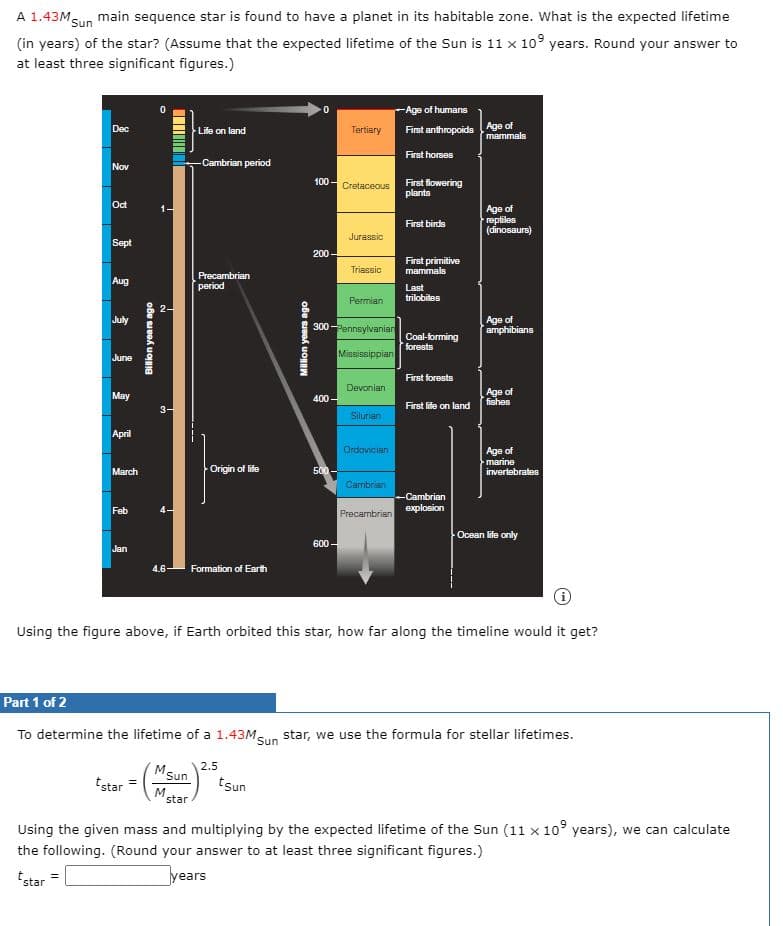To determine the lifetime of a 1.43MSun star, we use the formula for stellar lifetimes. Sun 2.5 tsun tstar M. star Using the given mass and multiplying by the expected lifetime of the Sun (11 x 10° years), we can calculate the following. (Round your answer to at least three significant figures.) tstar = years
Stellar evolution
We may see thousands of stars in the dark sky. Our universe consists of billions of stars. Stars may appear tiny to us but they are huge balls of gasses. Sun is a star of average size. Some stars are even a thousand times larger than the sun. The stars do not exist forever they have a certain lifetime. The life span of the sun is about 10 billion years. The star undergoes various changes during its lifetime, this process is called stellar evolution. The structure of the sun-like star is shown below.
Red Shift
It is an astronomical phenomenon. In this phenomenon, increase in wavelength with corresponding decrease in photon energy and frequency of radiation of light. It is the displacement of spectrum of any kind of astronomical object to the longer wavelengths (red) side.
A 1.43MSun main sequence star is found to have a planet in its habitable zone. What is the expected lifetime (in years) of the star? (Assume that the expected lifetime of the Sun is 11 ✕ 109 years. Round your answer to at least three significant figures.)

Trending now
This is a popular solution!
Step by step
Solved in 2 steps









